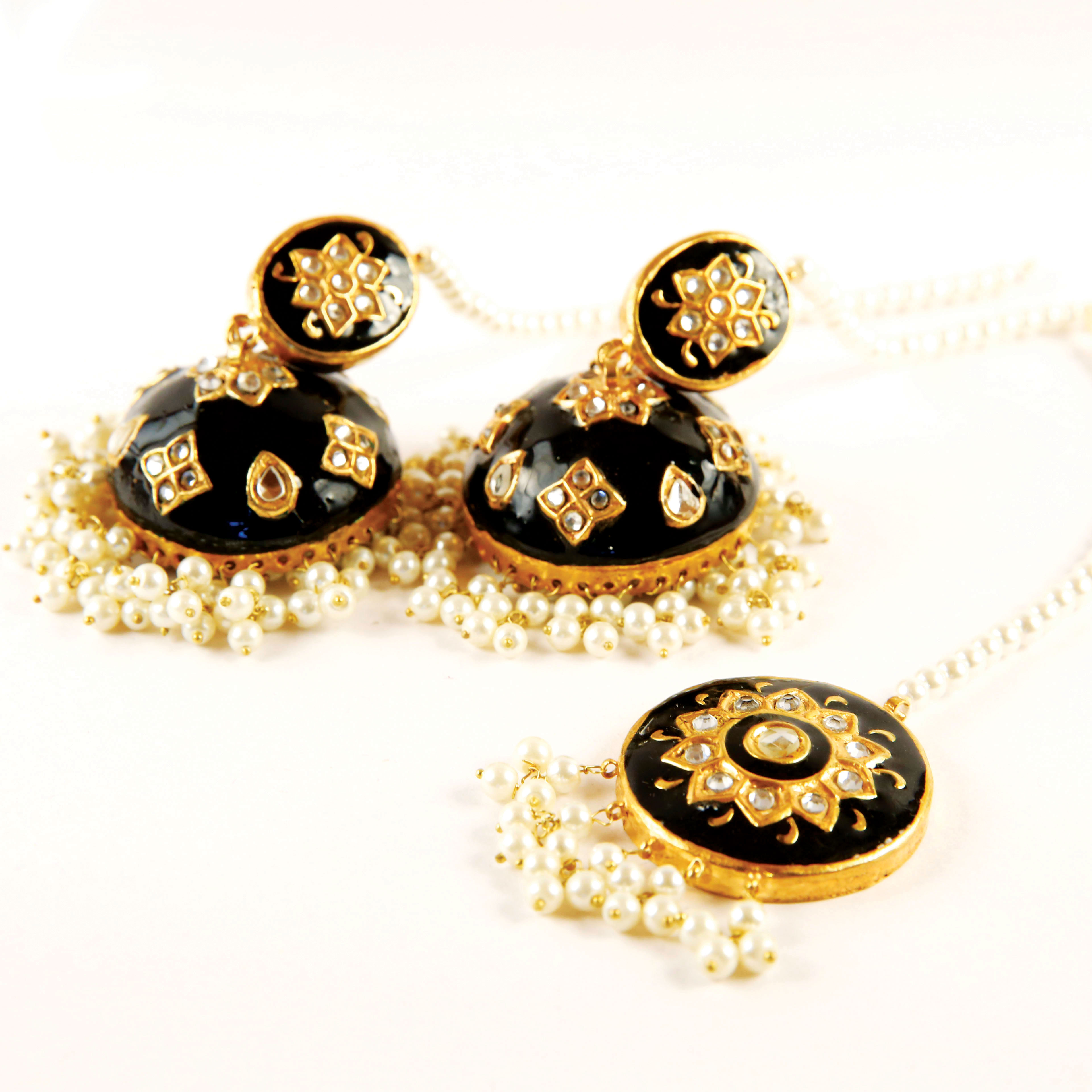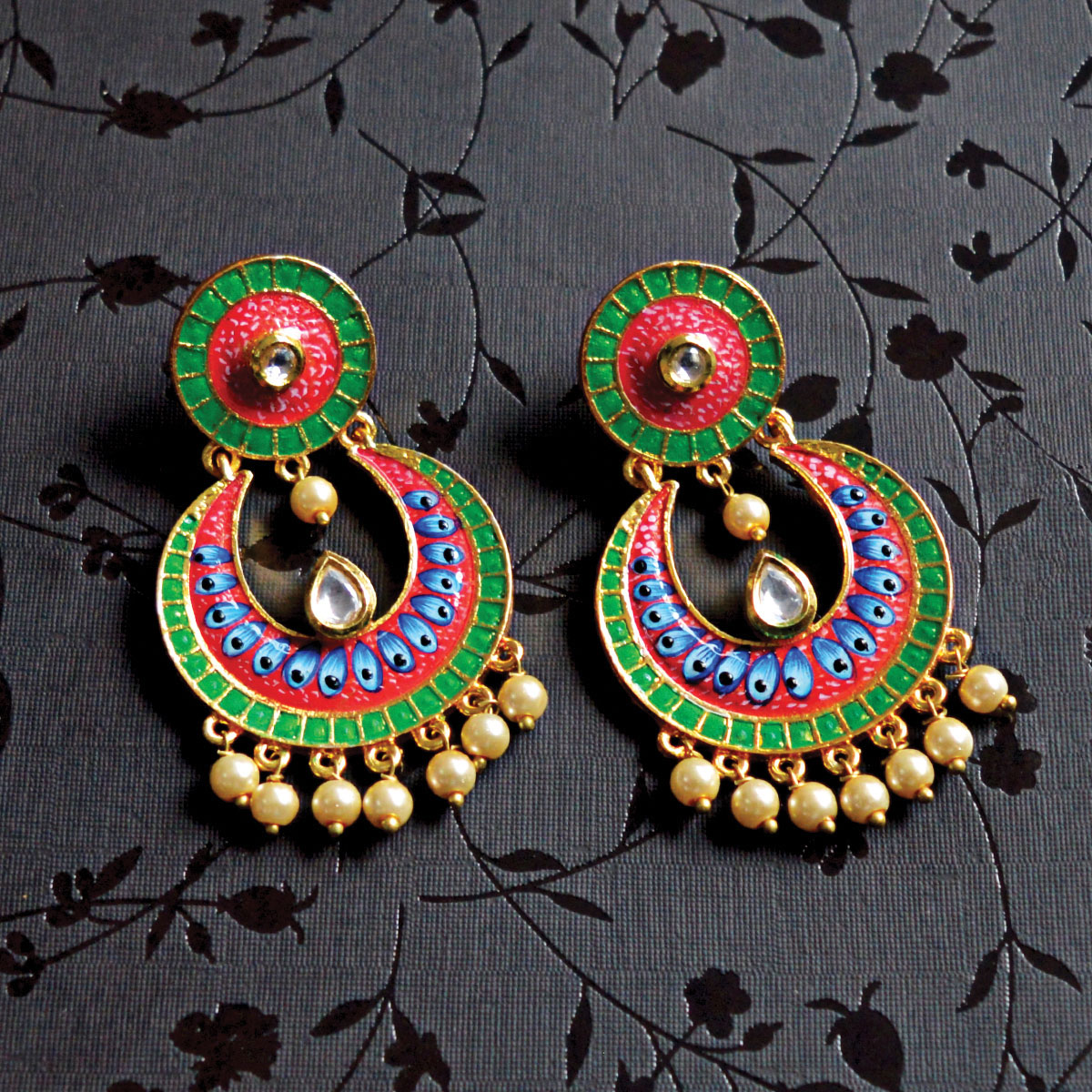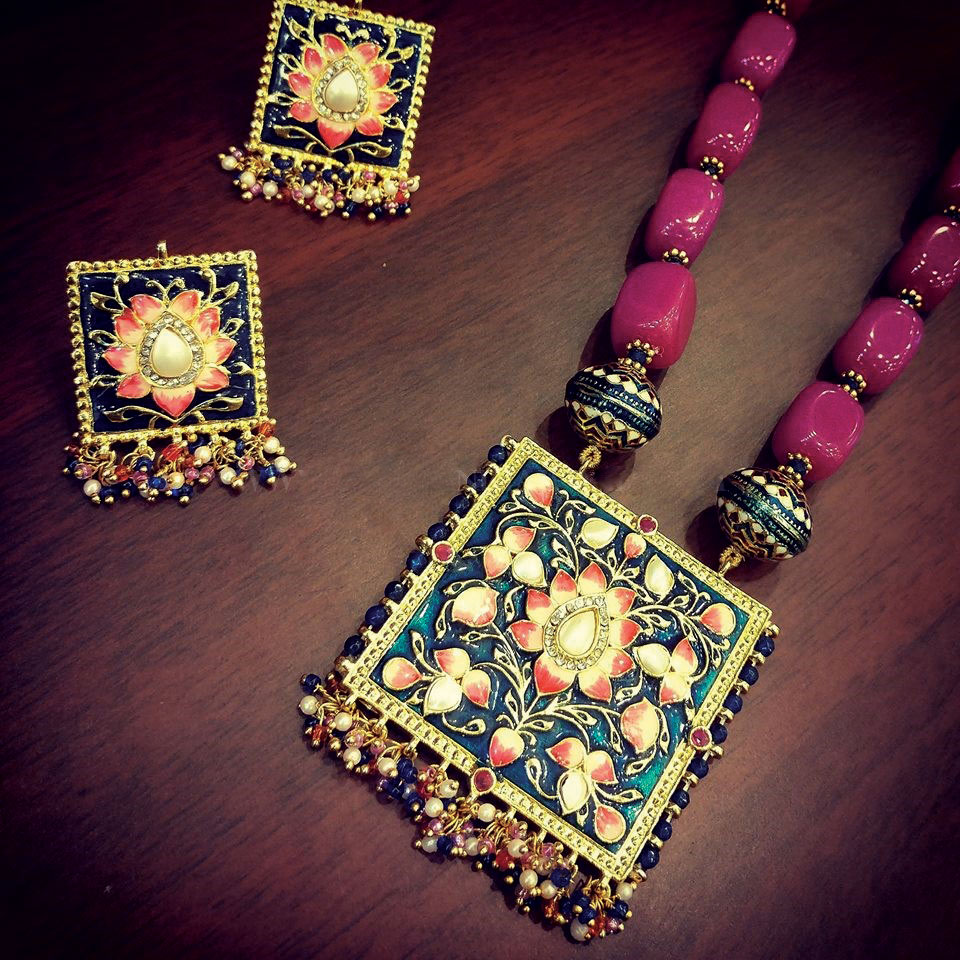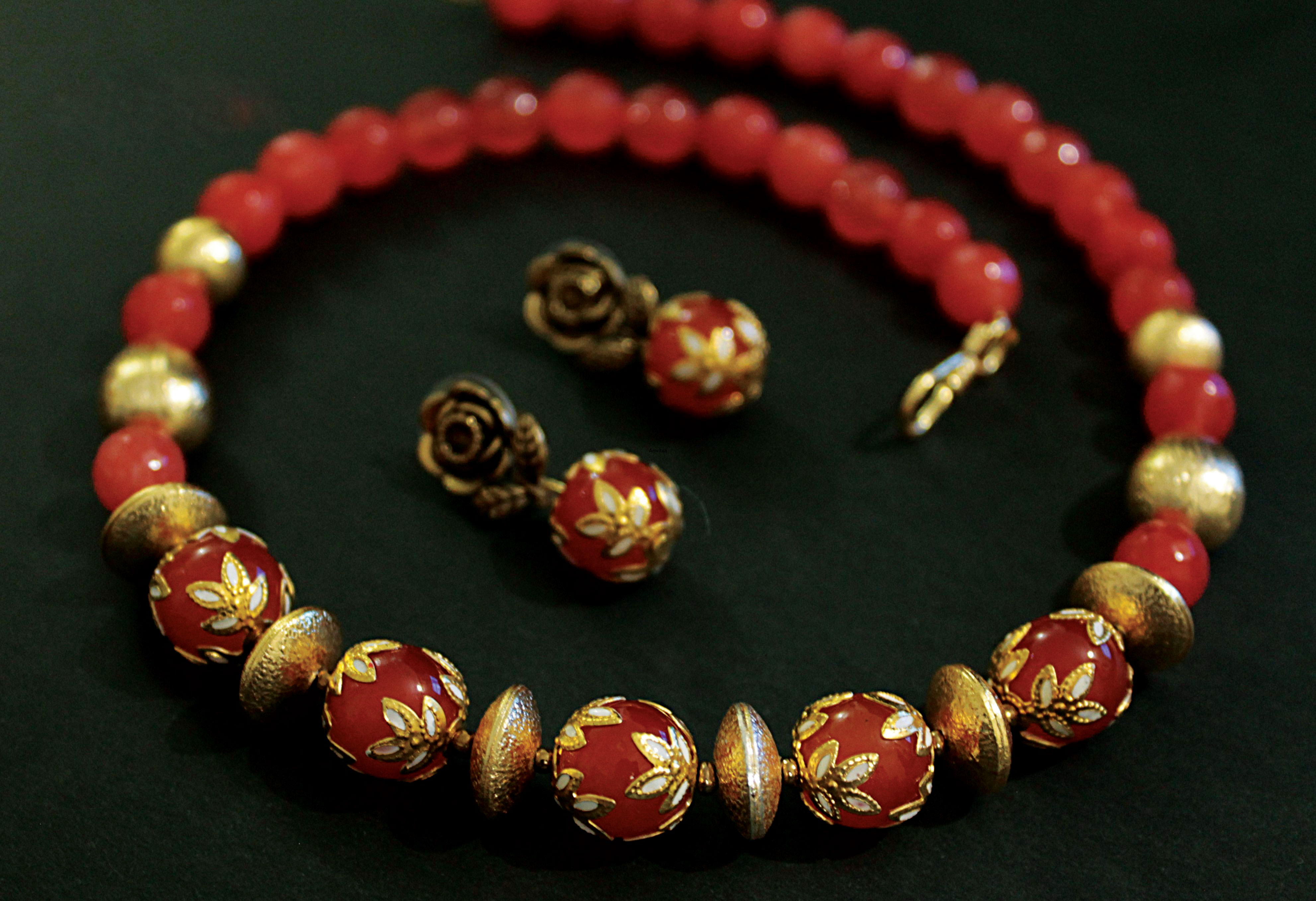Jewelry in ancient times was not only an adornment, but each stone was endowed with a mystical quality and used as a protection against evil forces. The advent of Moghul rule further embellished the use of jewelry. It resulted in a great outburst of ornamentation, elegant and exquisite, and of a lush extravagance never seen before. Although traces of enameling have been found in ancient Taxila, this art reached its zenith only under the Moghuls, when even the unseen reverse side of each jewel was covered with intricate enamel work (meenakari).
Jaipur became the hub of Meenakari art with the influx of highly skilled craftsman from Lahore. In a few years, the talent of the craftsmen made the place a specialized centre of Meenakari designing.
Meenakari designing basically refers to the process of coating grooves or engravings in ornaments with colored enamels. A wide variety of metals can be used for Meenakari designing which include brass, copper, silver and gold. Meenakari jewelry is used to beautifully express various themes and occasions and give exquisite look to it.

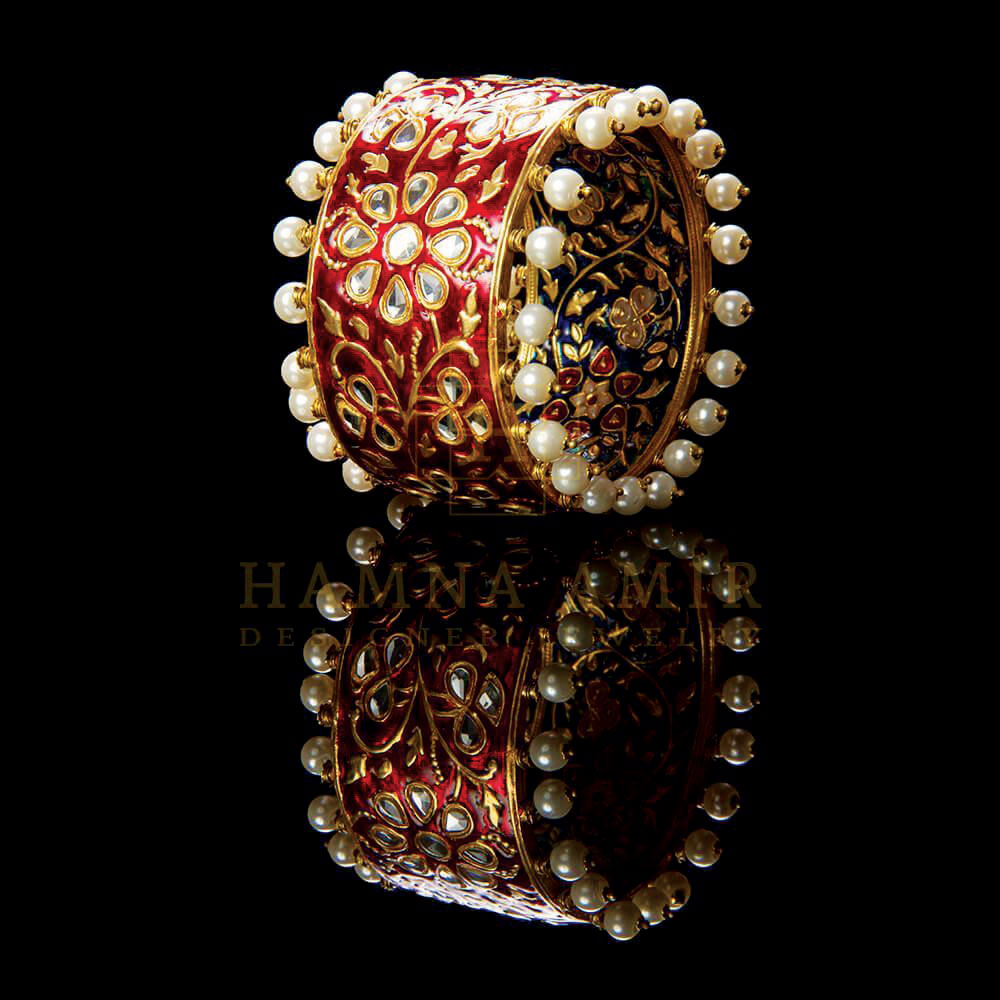
History
The word Meenakari is derived from Meena, which is the feminine form of Minoo in Persian which means heaven. Meena means the azure colour of heaven. Since ages, gold has been the preferred metal for Meenakari as it enhances the luster of the art. The use of silver was introduced later which was mainly used to make bowls, boxes and art pieces. Copper is also used in artificial jewelry.
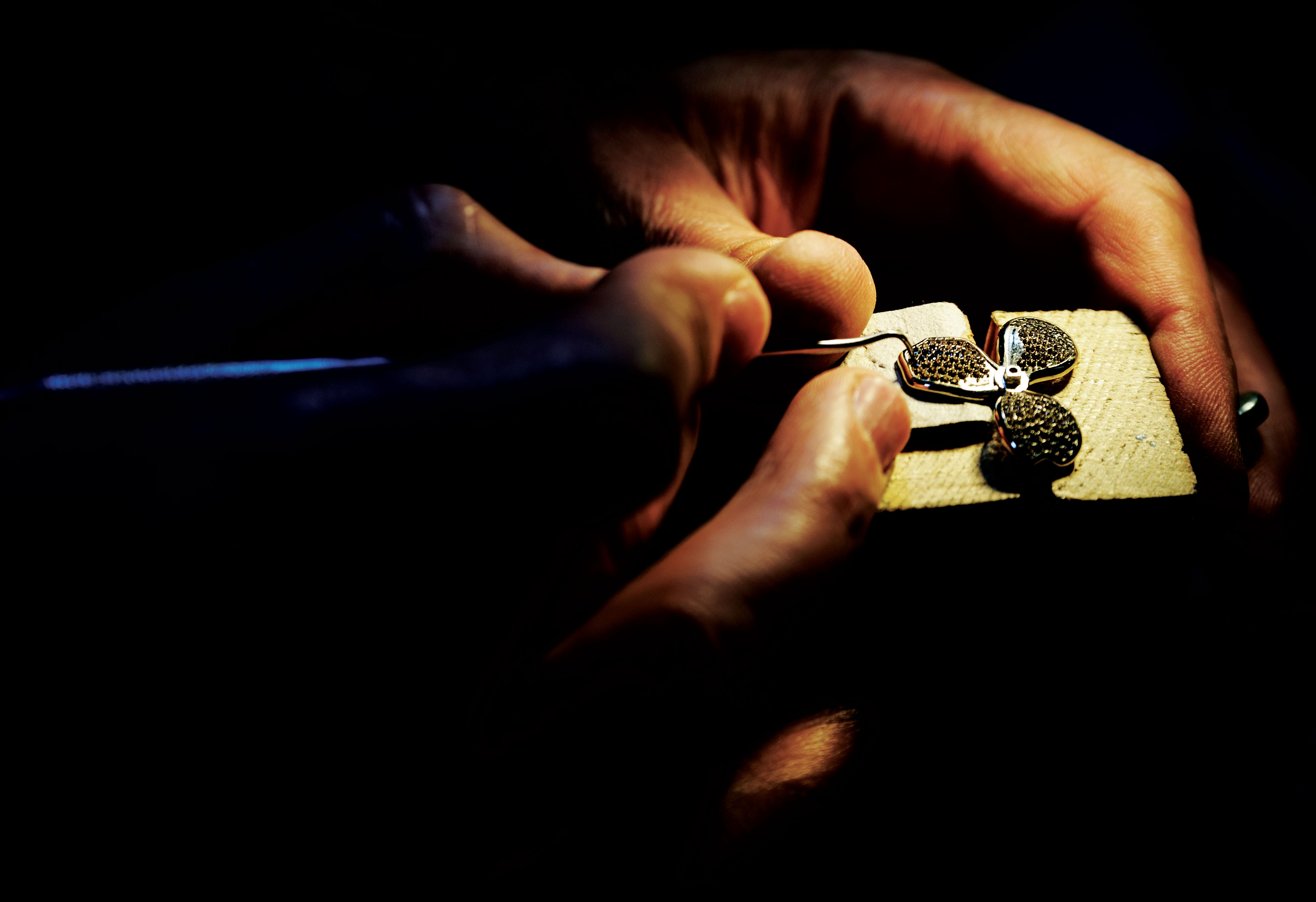
Types of Meenakari Art
There are primarily two types of Meenakari art including “Ek rang khula” and “Panchrangi meena.” In the first one, only a single colour is used, while the other one is about using five vibrant colours which include white, pale blue, dark blue, red and dark green. The use of precious stones is widely used in the Meenakari jewelry. Gulabi Meena inspired by the pink blush of roses makes the pink colour dominant in this form of the art.
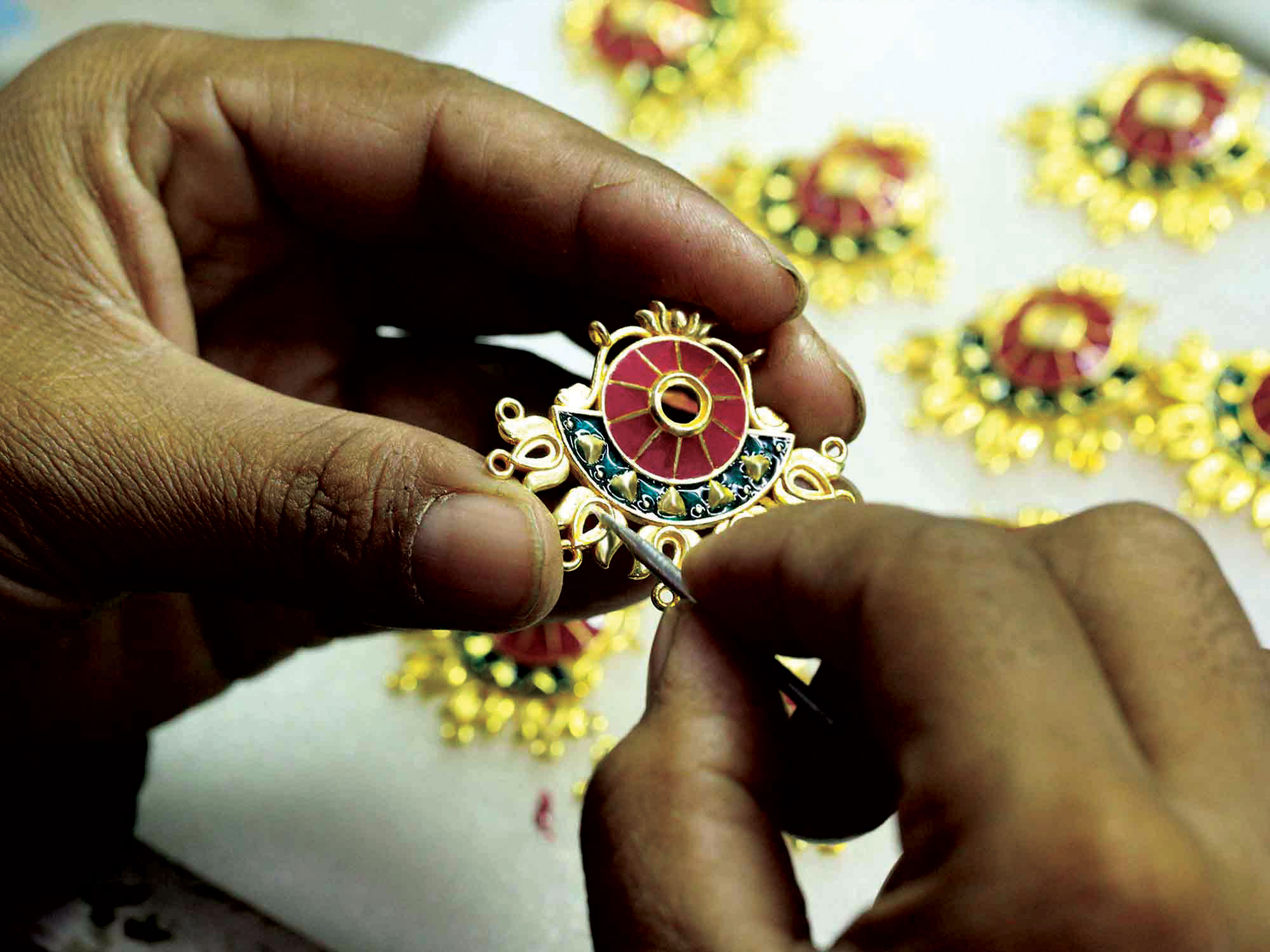
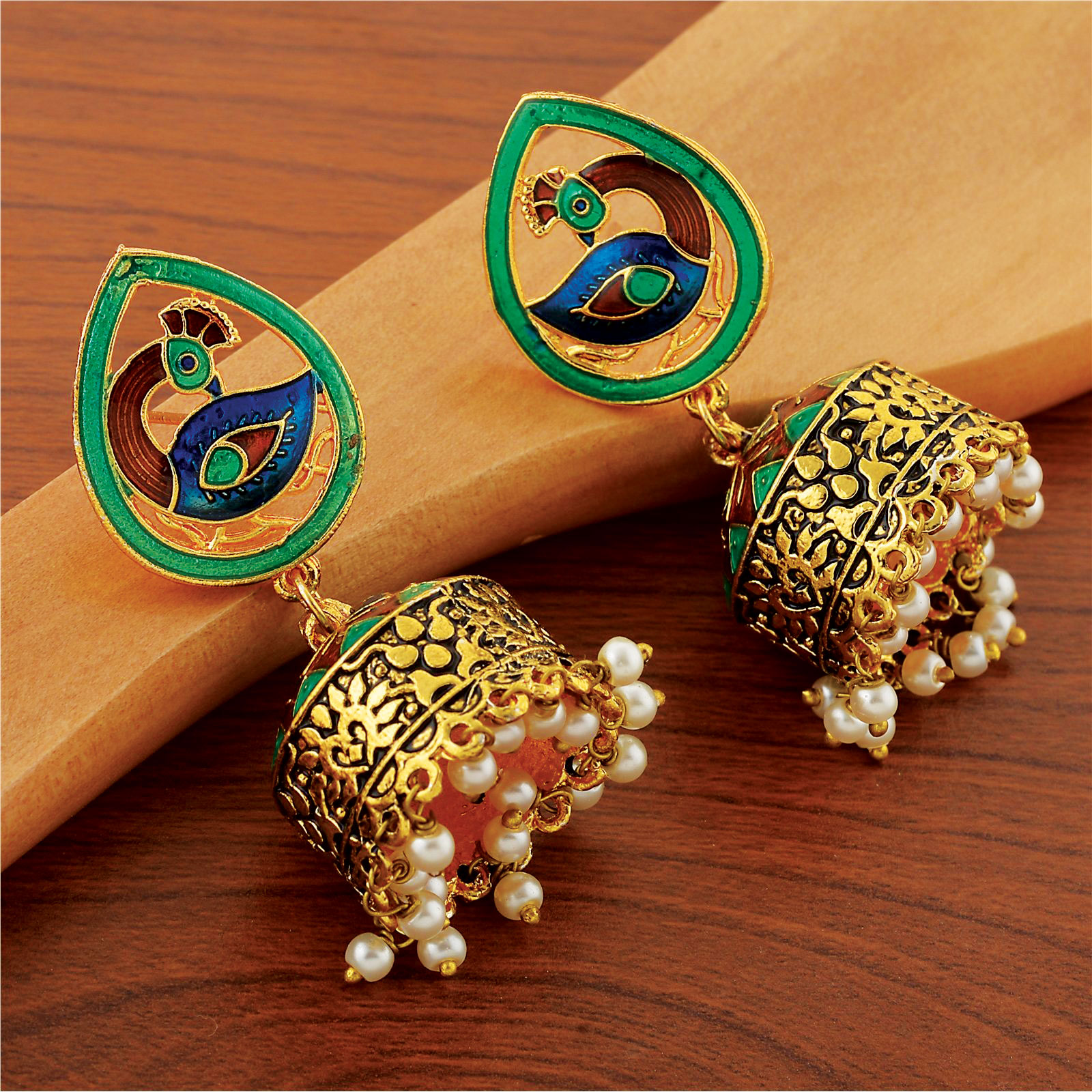
Process
Surface of the metal is engraved with intricate designs by the artisans using a metal stylus and later filled with colours. After that, the meena is placed in a furnace where the colours get fused and hardened and appear uniform to the surface. Thereafter a mixture of lemon and tamarind is used to gently rub the surface and get the luster of each colour highlighted. The most fascinating quality of this jewelry lies in its reversibility as it can be reversed and worn by the wearer to enjoy different patterns in the same piece of jewelry.
Meenakari is not just restricted to jewelry. The art now pervades décor products like jewelry boxes, idols, dining sets, trays, cupboards, bowls, sculptures, key chains and more. Initially, done only on gold, it is now also done on silver and copper now. While gold is mostly used for jewelry, silver is used for bowls, spoons, decorative artefacts, and copper is used for sculptures and idols. The Mughal period also saw exquisite Meenakari on hookahs and paan daans.
